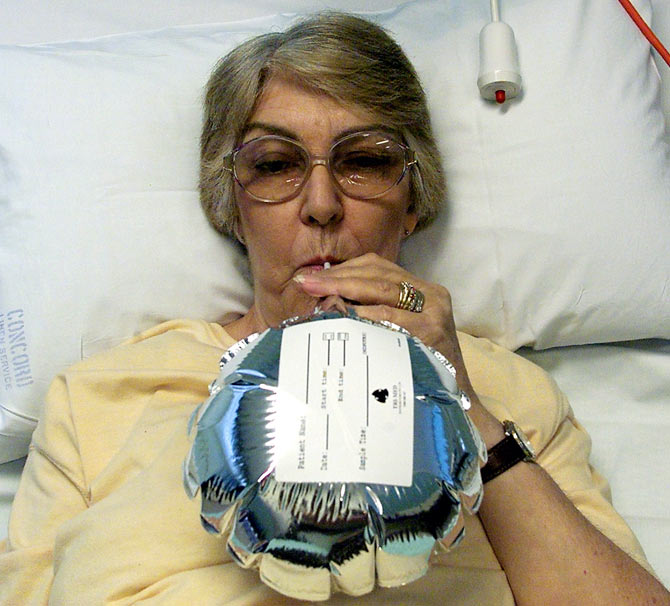Want a friend to kick the butt? Try coaxing them on a Monday!
Mondays are when smokers are most likely to think about quitting, a new study of Google search queries has found.
Researchers from San Diego State University, the Santa Fe Institute, The Monday Campaigns and the Johns Hopkins Bloomberg School of Public Health examined weekly patterns in smoking cessation contemplations for the first time.
They monitored global Google search query logs from 2008 to 2012 in English, French, Chinese, Portuguese, Russian, and Spanish for searches related to quitting, such as 'help quit smoking'.
The study found that people search about quitting smoking more often early in the week, with the highest query volumes on Mondays, using a daily measure representing the proportion of quit smoking searches to all searches.
This pattern was consistent across all six languages, suggesting a global predisposition to thinking about quitting smoking early in the week, particularly on Mondays.
English searches, for example, showed Monday query volumes were 11 per cent greater than on Wednesdays, 67 per cent greater than on Fridays, and 145 per cent greater than on Saturdays.
In total for all six languages, Monday query volumes were 25 per cent higher than the combined mean number of searches for Tuesday through Sunday.
"Popular belief has been that the decision to quit smoking is unpredictable or even chaotic," said the study's lead author, San Diego State University's John W Ayers.
"By taking a bird's-eye view of Google searches, however, we find anything but chaos. Instead, Google search data reveal interest in quitting is part of a larger collective pattern of behaviour dependent on the day of the week," Ayers said.
"Campaigns for people to quit may benefit from shifting to weekly cues. We know it takes smokers many quit attempts before they succeed, so prompting them to try again on Mondays may be an effective and easy to implement campaign," said Joanna E Cohen, co-author and Director of the Johns Hopkins
Institute for Global Tobacco Control.
The study was published in the Journal of the American Medical Association, Internal Medicine.
Note: All pictures used only for representational purposes
New soy flour may help boost memory, cut dementia risk
Image: A package of toasted soybeansPhotographs: Wikimedia Commons/CoolFox
Scientists have developed a new soy-based flour product which they believe can improve memory in older age and reduce the risk of dementia.
The flour originates from tempe -- a fermented soy-based product similar to tofu used widely in Asian cooking.
Tempe contains phytoestrogens (plant based hormones) and several B vitamins and has been shown in studies to be associated with improved memory function among the older population.
Eef Hogervorst, Professor of biological psychology in Loughborough University's School of Sport, Exercise and Health Sciences, has been working with her PhD student Atik Irsan and colleagues at the University of Indonesia and Bogor Agricultural University to develop a flour that retains the folate and cobalamin found in tempe.
"Our follow-up studies have shown that eating more tempe helps improve the memory of older people in Indonesia. We also found older rats who were given tempe had improved memory and fewer markers associated with dementia, such as plaques on the brain," Hogervorst said.
"Tempe can be chewy, which may make it more difficult for older people to eat it. By turning it into flour it gives us more ways of administering it; we can now use it in a liquid form, making it more accessible to the older population -- those who would benefit most from tempe.
"We previously found that eating lots of tofu (which also contains phytoestrogens) in Indonesian elderly was associated with worse memory, similar to other studies in older Japanese Americans.
"It may be the case that the folate and cobalamin in tempe protect, allowing phytoestrogens to exert protective effects on the older brain.
"The next step is to see if we can repeat our initial findings in a Western population. If it works, it will be a major step towards preventing memory decline in old age," Hogervorst said.
The scientists have patented the flour's manufacturing process, and plan to test it in nursing home settings in the UK and Indonesia to validate earlier findings of pilot studies.
Simple breath test may detect lung cancer
Image: Chemotherapy patient Linda Bremmer blows into the world's first cancer 'breath test' bag which monitors how a patient breaks down chemotherapy drugs so that the dose of drugs can be prescribed at Royal Prince Alfred Hospital in SydneyPhotographs: David Gray/Reuters
Lung cancer may be detected in patients by testing their exhaled breath, scientists say.
Certain chemicals in exhaled breath could serve as biomarkers for lung cancer, according to researchers at Cleveland Clinic in the US.
Preliminary studies suggest that an accurate exhaled breath biomarker could be developed for use as a clinical test, researchers said.
"We believe that cancer cells release a unique chemical signature related to the tumour-growing process," said Peter J Mazzone, director of the lung cancer programme for the Respiratory Institute at Cleveland Clinic.
"We are currently developing a breath-based test based on the results of our research," Mazzone said.
Mazzone and his colleagues studied 82 people with biopsy-confirmed lung cancer who had not yet received treatment against a control group of 155 people who were either at-risk for lung cancer or who had benign lung nodules.
Subjects were asked to breathe normally while their breath was exposed to a high-dimensional chemical sensor called a colorimetric sensor array.
The colours on the array change when exposed to various chemicals. If the chemicals in the breath contained markers for lung cancer, the array would show that in a pattern of colour changes.
The colorimetric sensor array continually monitored the chemicals exhaled from the breath of the subjects, resulting in sensor changes that accurately distinguished the breath of people with lung cancer from the controls.
The findings were presented at CHEST 2013, the annual meeting of the American College of Chest Physicians (ACCP), in Chicago, Illinois.
Virtual 'avatars' may alter real-life experiences
Photographs: Reuters
Spending time immersed as a virtual character or avatar in a role-playing video game can alter your experience of reality and numb you to important real-life experiences, according to a new study.
Ulrich Weger of the University of Witten/Herdecke in Germany and Stephen Loughnan of Melbourne University in Australia, studied what happens when gamers take on the role of -- and identify with -- a non-human character such as an avatar during immersive video gaming, and how it especially
influences their experience of pain.
Avatars often have automaton-like, robotic characteristics such as mechanistic inertness, rigidity and a lack of emotion and warmth.
Participants were asked how much time they spend each week playing video games. Their responses were then correlated with a measure of pain tolerance by counting the number of paper clips that they could retrieve from ice-cold water.
In a second experiment, participants played either an immersive or a non-immersive computer game before taking part in the same pain-resistance task.
The immersive video-game players exhibited a reduced sensitivity to pain and removed significantly more paper-clips from ice-cold water. They were also more indifferent to people depicted as experiencing displeasure than were the non-immersive players.
Weger and Loughnan found that by taking on and acting from the perspective of an automaton-like avatar, people are desensitised to pain in themselves and in others.
The point of view adopted during video gaming appears to have implications that extend beyond the virtual environment, into real life.
Weger pointed to what he sees as a misleading development: that the human-machine boundary is increasingly being blurred, either by humans entering virtual machines/robots, or by anthropomorphising, in other words adding human qualities to animated figures and toys.
Machines are being programmed to attract human inclinations, while virtual characters and robots have started to perform tasks or roles that were traditionally held by humans, such as that of robot counselling therapists.
In such an environment it becomes increasingly easy and normal to regard artificial beings as being akin to human beings.
"We see this blurring as a reality of our time but also as a confused and misleading development that has begun to shape society," said Weger.
"We believe this should be balanced by other developments, for example, by working on our awareness of what it really means to be human," Weger said.
The study was published in the journal Psychonomic Bulletin & Review, published by Springer.
It's official! Having sex just as effective as gyming
Photographs: t69 on Flickr.com/Wikimedia Commons ANI
A new study has found that having sex is similar to exercising, as it burns an average of 4.2 calories a minute in men and 3.1 calories a minute in women.
For the study, sex researchers William Masters and Virginia Johnson observed 21 young heterosexual couples having sex and discovered that heart rates reached as high as 180 beats per minute, Live Science reported.
Participants in the study were asked to don an armband, called SenseWear, that would help researchers keep an eye on their energy expenditures while they had sex.
Before being sent home to have sex at least four times in a month, each person was required to do a 30-minute moderate-intensity workout on the treadmill to provide a baseline measure of their calorie expenditure during exertion.
The findings showed that men, on average, spent 101 calories while having sex, as compared to 276 calories on the treadmill.
Also, women spent an average of 69 calories during a sex session, compared to an average of 213 calories on the treadmill.
According to researchers, the results of the study suggest that sexual activity may potentially be considered, at times, as a significant exercise.
The study was published online in the journal PLOS ONE.






Comment
article